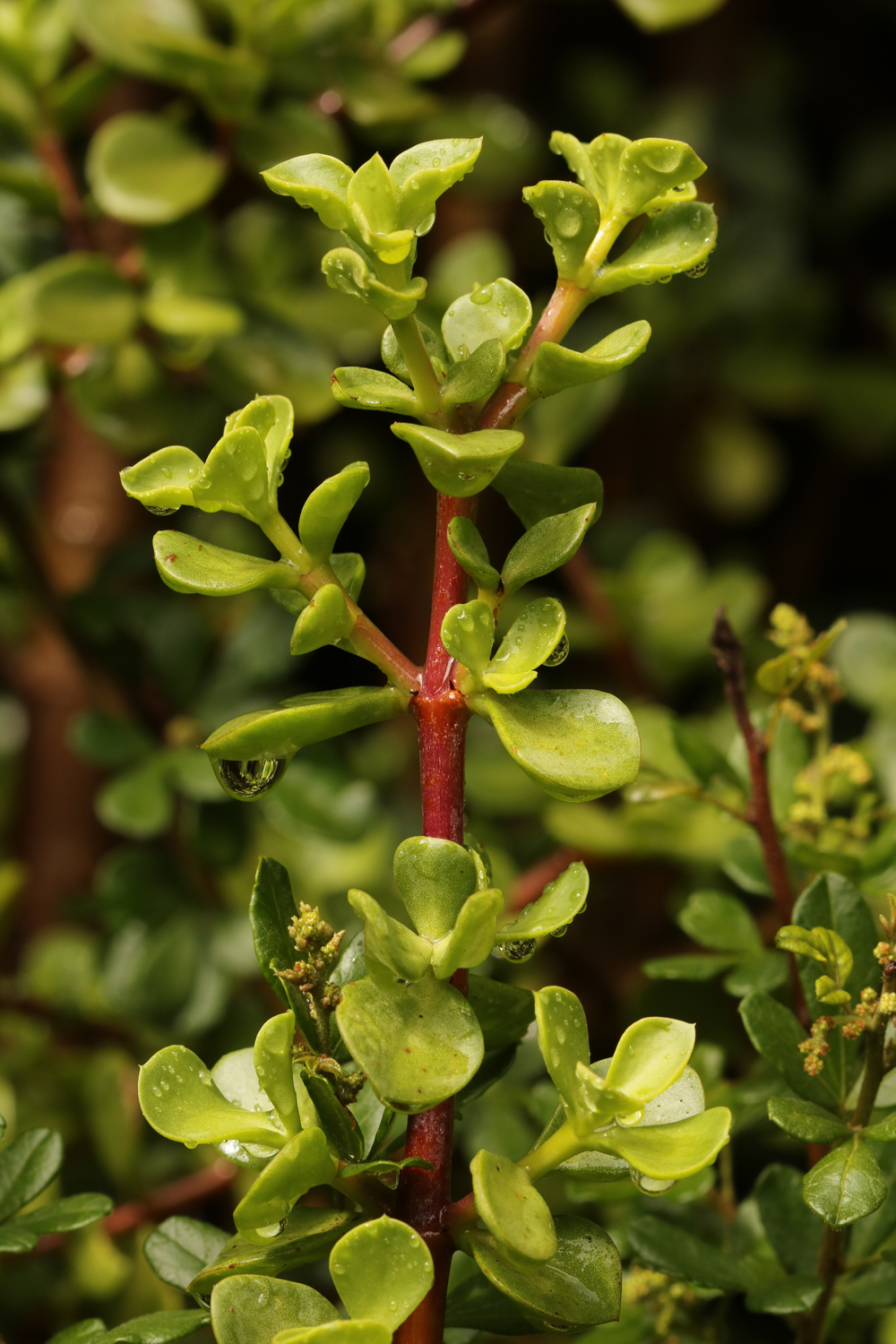Portulacaria afra
Common Name:
Dwarf Jade

General Information:
A Fleshy, softly woody shrub or small tree up to 3m to 4m, often sprawling; occurring on dry rocky hillsides and in succulent scrub. Portulacaria afra, also called “Elephant Plant” or “Small leaf Jade” is relatively new in bonsai but one that almost anyone can grow. It can withstand long periods without water making them excellent plants for beginners. Advanced students of bonsai find them excellent material because they adapt to any style and develop relatively fast.
The bark is green when young, becoming red-brown to slategrey, and smooth with conspicuous leaf scars.
Leaves are simple, opposite, almost circular, about 1.5cm in diameter, or obovate, up to 2.5x l.7cm, fleshy, pale grey, pale greyblue-green to dark green; each pair of leaves at right angles to the next along the reddish stems; apex rounded with a short, abrupt point; base tapering; margin entire; petiole very short or almost absent.
Flowers are small, star shaped; sepals 2; petals 5, pale pink to purplish; stamens 5 to 7. As yet I have not seen one bloom in Florida; possibly because we do not allow our plants to become sufficiently dry.”
Lighting:
It can be grown outdoors in full sun or indoors with sufficient light. Temperature: Portulacaria will tolerate a variety of growing conditions.
Since it is tropical it must be protected from cold temperatures (below 50).
Watering:
Always allow the soil to approach dryness before watering. Although it is a succulent, Portulacaria is not as particular about over-watering as most other succulents.
Pruning and wiring:
This is a plant that adapts to almost any style bonsai. As a succulent, water is contained in the trunk and branches, they tend to droop from their weight. This characteristic makes them excellent for long cascades.
When styling this plant do not hesitate to do drastic pruning. When removing branches or twigs, make all cuts flush rather than concave. Deep cuts will leave unwanted scars and may cause die back. It is not necessary to seal any of the cuts. It is important to allow the soil to dry before you remove heavy branches or root. Then water sparingly until it begins to reestablish itself.
Refinement is performed by removing the terminal bud from any branch that you don’t wish to grow longer. Since the leaves are opposite and each consecutive set of leaves rotate 90 degrees, it is possible to refine the tree by pinching and removing those buds and branches that are not growing where you want them.
When creating very small bonsai (mame) you sometimes need to shorten a branch to a vertical set of leaves. In order to get horizontal growth it is necessary to rotate the vertical pair of leaves 90 degrees. A few turns of 1 mm aluminum wire at the top of the branch and a 90 degree twist of the last set of leaves will accomplish this.
Pinching is the secret to the refinement of any bonsai. Since Portulacaria is fast growing, it must be pinched frequently during the growing season. Usually once a week is sufficient for a large bonsai. When working with mame it may be necessary to pinch as often as twice a week.
While some training can be accomplished by wiring, it is not as effective a training technique with Portulacaria as it is with hard wood species of plant material.
Propagation:
Cuttings of branches or entire leaves.
Repotting:
Spring is the best time to repot. In the tropics it can be done at any time if given proper after care. Always allow the soil to become dry before repotting and do not water it until new growth appears. Keep it in a semi-shaded location until new growth begins, then place it in its normal location. Special soil mixes are not required for Portulacaria. Regular bonsai mix will probably be satisfactory. As always, good drainage is important.
Pests and diseases:
Mealy bugs, root rot.
Bibliography:
Florida Bonsai VI:3:40-41,VII:2:3,IX:3:15,X:4:34- 45,XIII:3:45,XIV:1:19,XIX:4:41-46
Described in “Trees of Southern Africa” by Keith Coates Palgrave published in 1988 by Struik Publishers, Cape Town.
A detailed monograph on Portulacaria afra may be seen at:
http://www.phoenixbonsai.com/Portulacaria.html
Compiled by Sabrina Caine and Thomas L. Zane
